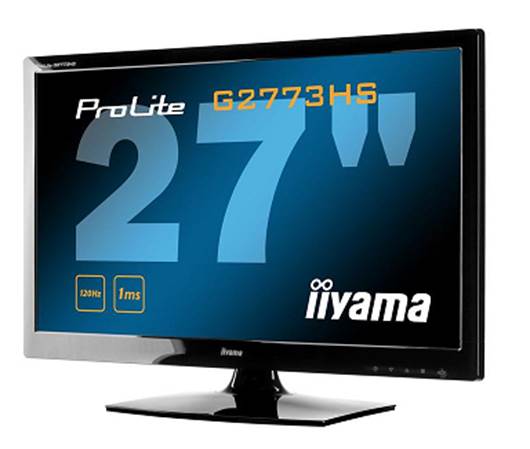So slick it hertz. Just like that pun
Teeth sucking and copious sighing, that’s
pretty much the drill whenever stereoscopic 3D technology is mentioned round
here in its current format, we don’t entirely jive with 3D. But if the very
mention of it brings on eye-bork, ponder this: if it weren’t for 3D tech, the
rise in high-refresh PC monitors wouldn’t be happening. Before the arrival of
3D technology, most people pooh-poohed the idea that there was much to gain by
going beyond the default 60Hz on a flat panel monitor. And we’d have agreed
with them.

Yes, higher refreshes had previously been
popular on old-school CRT monitors, but that was a flicker-related issue and
LCDs don’t flicker at any refresh – it’s just not how they work. Anyway, as
soon as we first enabled the 120Hz refresh rate while testing Nvidia’s 3D
Vision, the benefits for 2D image quality were immediately obvious and rather
surprising.
Put simply, 120Hz is massively smoother and
far slicker. That goes for everything from gaming to just juggling application
windows on the desktop. The only significant exception is video content, which
is coded in fixed frame rate formats so, for the most part, a screen refresh
rate above the frame rate us redundant.
Enter the memorably named Iiyama Prolite
G2773HS and its 120Hz refresh capabilities. Thanks to that high refresh rate,
it is in fact compatible with active shutter 3D platforms such as Nvidia’s 3D
Vision. But that’s not how the panel is being pitched. Nope, it’s being sold
mainly on the all-round benefits of 120Hz, which suits us just fine.
What you do with it
Size-wise, we’re talking 27 inches, which
is increasingly popular for PC monitors. It’s got the 120Hz box ticked, but
it’s a TN panel and in terms of native resolution, it’s a mere 1080p panel.
It’s actually a pretty good example of the
TN breed, though. You get fairly rich and saturated colours, and the black
levels and contrast are streets ahead of what TN technology was capable of just
a few years ago. At the same time, however, TN still lags IPS and PVA tech in
several areas.

The most obvious involves vertical viewing
angles, ma metric by which the G2773HS is pretty pedestrian. The 1920 x 1080
pixel grid is quite low rent for a panel of this size, too. In fact, PC monitor
resolutions are looking increasingly measly as tablets and phones pile on the
pixels. With Google’s Nexus 10 tablet delivering 2,560 x 1,600 pixels in a
10-inch device, 1080p over 27 inches is rather risible.
It also means you don’t get any extra real
estate over your average 22-inch, $150 poverty panel. That said, for gaming,
1080p is arguably the sweet spot. In that context the combination of 120Hz and
a fast responding 1ms TN panel is very hard to beat.

In fact, Iiyama gives you five switchable
levels of pixel overdrive, which allows you to decide just how much you’re
willing to tolerate in terms of response-related nasties. In practice, it’s
super slick with overdrive disabled, so that’s how we‘d run it.
Technical analysis
High refresh technology has been popular
for a while in the HDTV market but we’ve never been convinced that it’s much
more than a gimmick when it comes to big TVs. That’s because there’s simply no
video content to really benefit from high refresh rates 1080p content typically
tops out at 30 frames per second. Okay, there can be benefits to higher frame
rates for deinterlacing video but a lot of the supposed upsides are complete
nonsense. Not so for PC monitors. On the desktop, you get a real 120Hz, and
thus much smoother animation. Likewise, if you’re graphics card is up to it,
you get the full 120Hz in-game.
|
Vital
Statistics
·
Price: $435
·
Manufacturer: Iiyama
·
Web: www.iiyama.com
·
Size: 27-inch
·
Native resolution: 1,920 x 1,080
·
Panel type: TN
·
Backlight: LED
·
Stand Tilt-only
·
Inputs: HDMI, dual-link DVI, VGA
Verdict
- Features: 7/10
- Performance: 8/10
·
Value: 7/10
|